At the museum, you should see this
ONE OBJECT
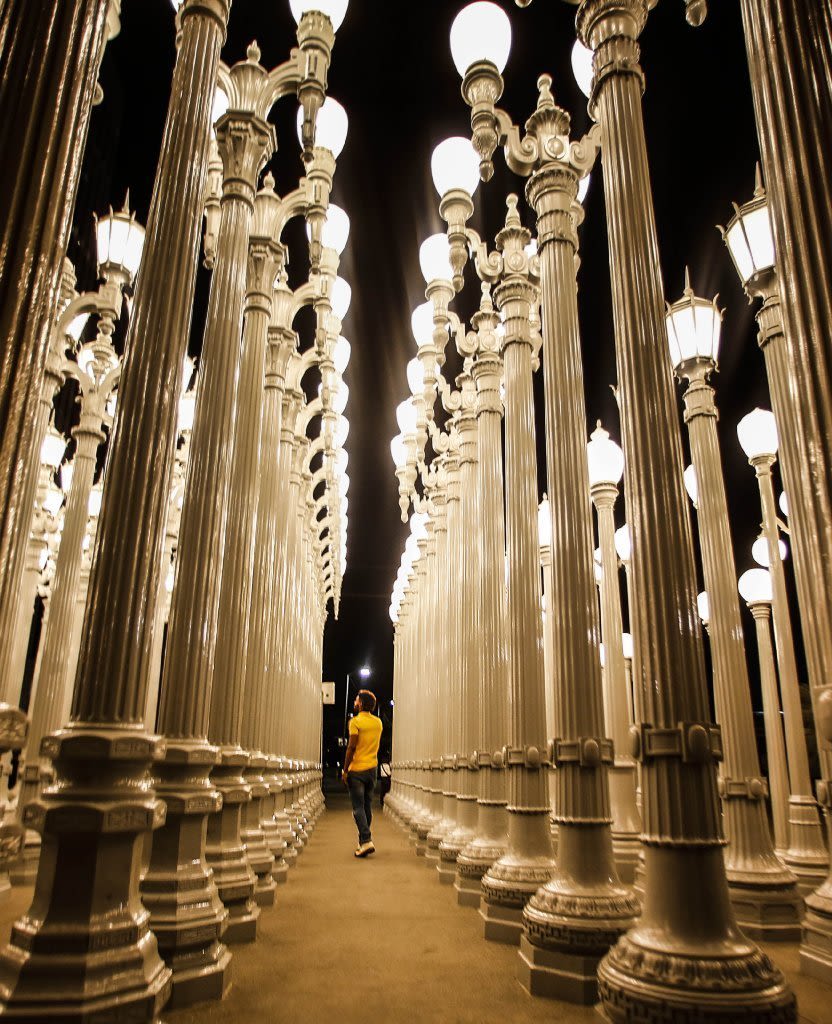
There is a grid of 202 street lamps in front of the Wilshire entrance at the LA County Museum of Art in Los Angeles.
This artwork is an installation—while the individual lamps are sculptural, together they stand as an architectural entity.
Urban Light’s creator, Chris Burden, explains that when the lamps flicker on, it “turns into a building with a roof of light.”
There are 16 varieties of lamps of various heights and bulb shapes. Each cast-iron lamp post has been rewired and refurbished, powder-coated a uniform shade of gray. All of the street lamps were made and used in the early 20th century, originally lit by incandescent bulbs, and now glow with LED bulbs that are solar powered.
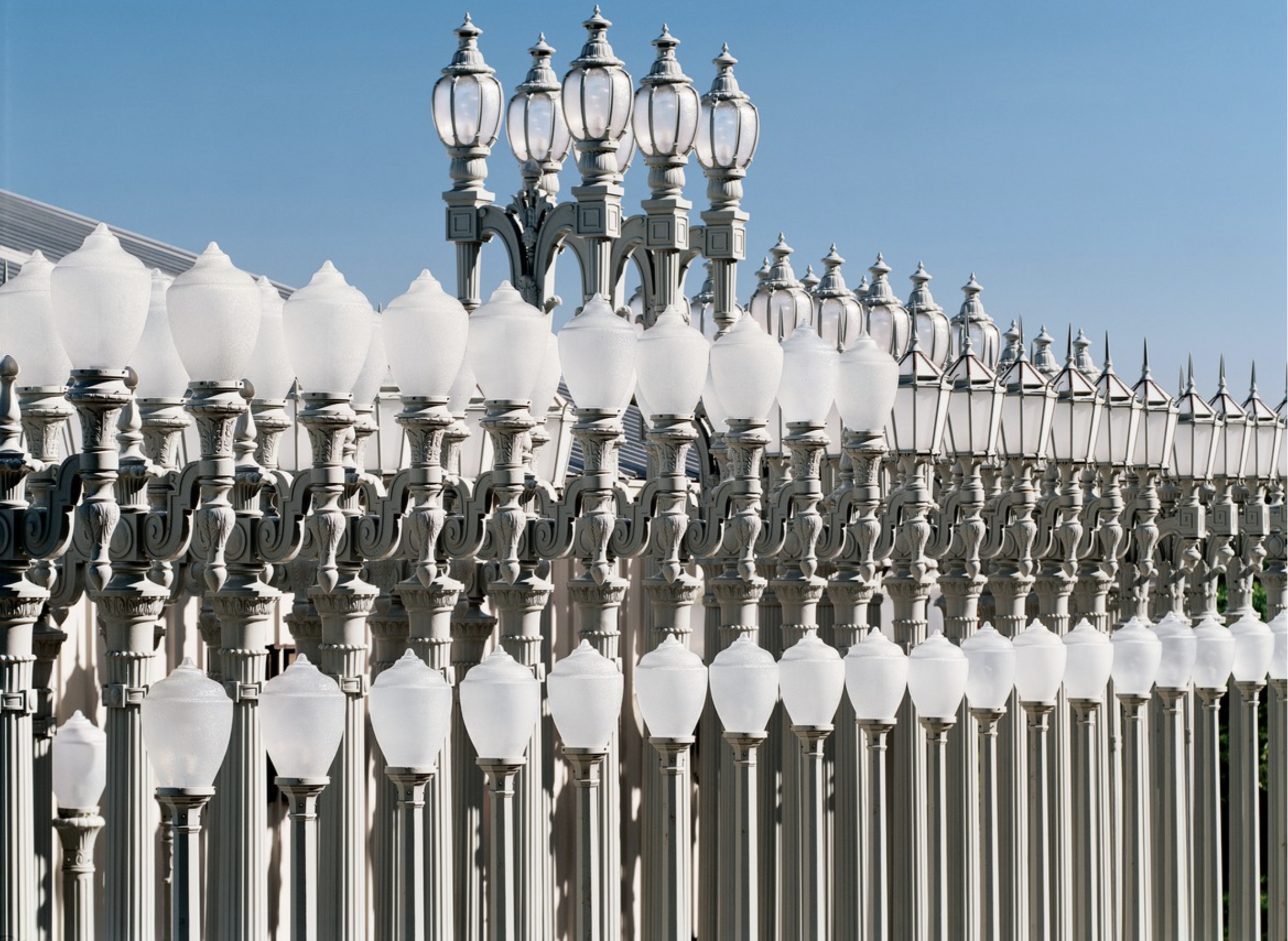
Urban Light
Urban Light
The different types of street lamps have distinctive features—there are round, cone, and acorn-shaped lamps, and each type has its own ornamental embellishments through the base and shaft of the light.
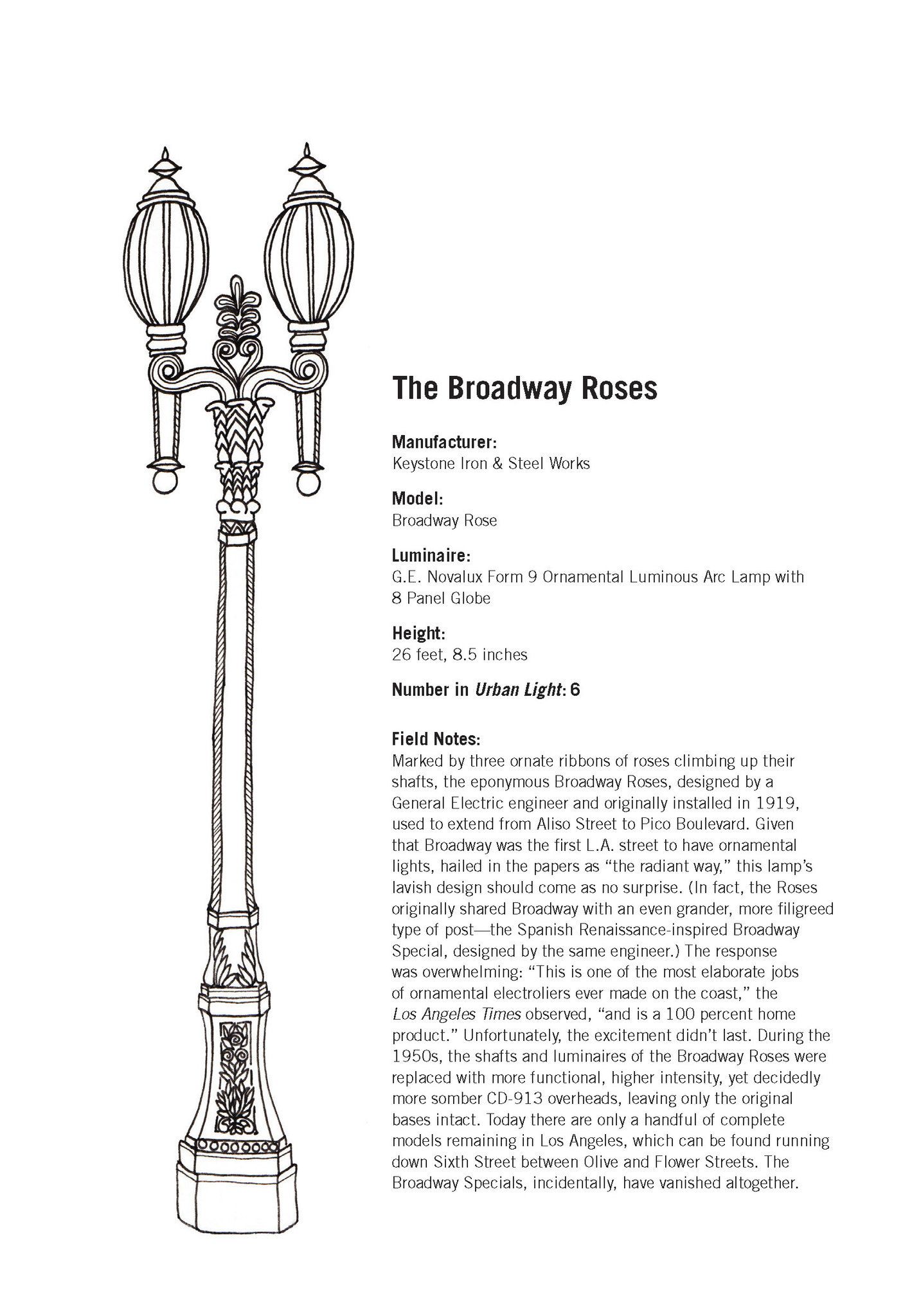
Broadway Rose
Broadway Rose
Burden’s favorite type of lamp was the Broadway rose, with distinctive rosebud finials.
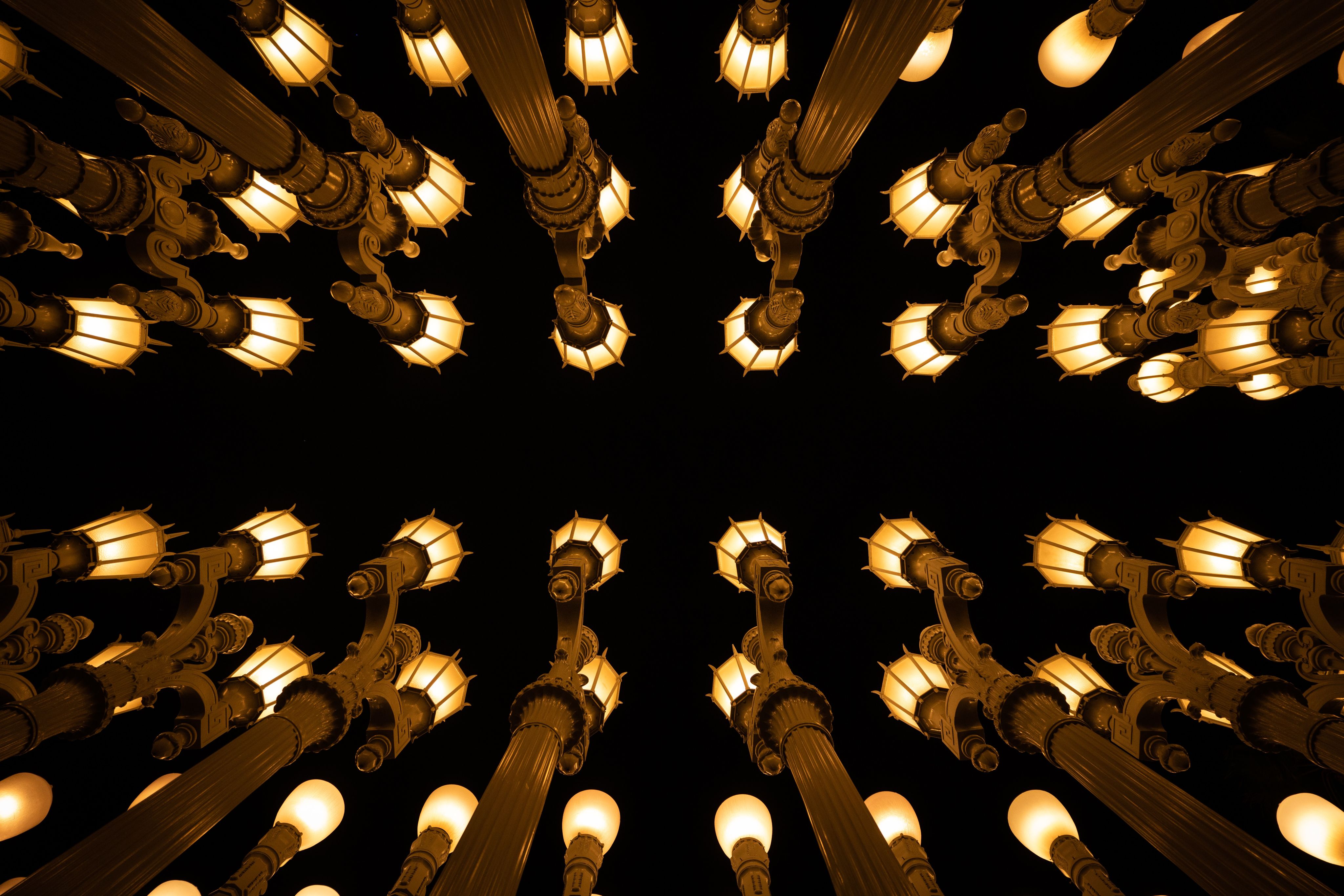
Photo by Intricate Explorer on Unsplash
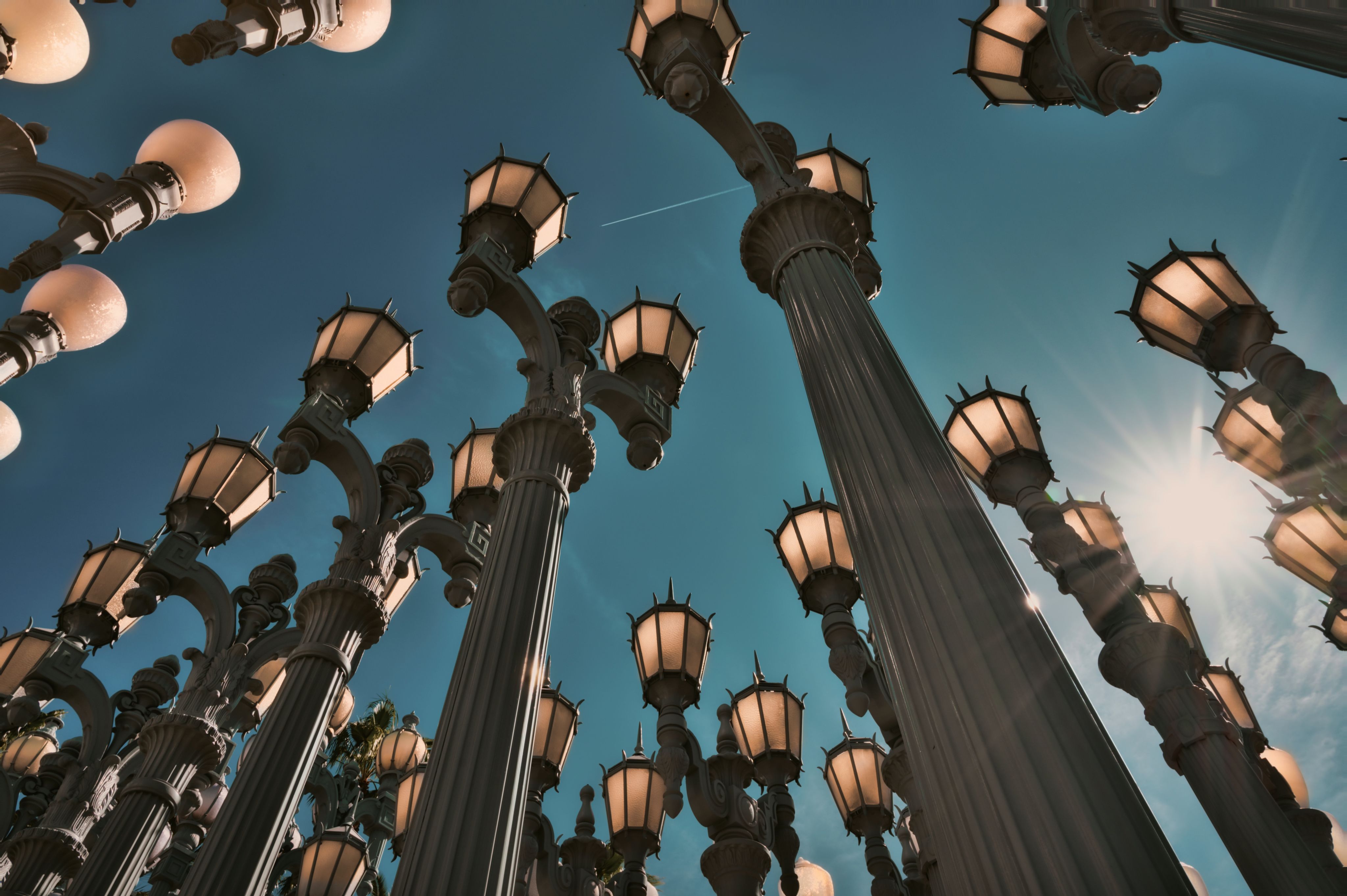
Photo by Venti Views on Unsplash
Urban Light began as a rescue mission, when Chris Burden was perusing the Rose Bowl Flea Market with a friend. Burden happened upon a disassembled street lamp in the shop and bought it.
After buying this and other rescued lamps from the shop owner, Burden began his obsession with street-lamp collecting, lovingly refurbishing all 202 lamps back to life.
What made these streetlights particularly meaningful to Burden was their history: each of these lamps was made to line the streets of Los Angeles County during the 1920s and 30s.
Each city in the county chose a different style of lamp, and Burden’s eclectic collection reflects a visual record of LA’s history.
When Burden constructed the Urban Light installation, he grounded the lights in a nearly (but not exactly) uniform grid.
The lamps stand as soaring, vertical lines. In a way, Burden gives us the LA version of ancient monumental temples.
In Egypt, the hypostyle halls of Karnak and Luxor were built as a type of primordial swamp, the beginning of the symbolic journey through life
The Greeks used the verticality of columns to mark the Temples of Athena and Zeus.
Burden comments on how the east coast museums embrace this authoritative and historic verticality through the use of columns throughout the museum spaces.
In Urban Light, Burden makes a temple in the modern age (2008) in a city that is often shrugged off as being too young to have its own history (Los Angeles).
In LA, perhaps the religious function of the ancient temple has been shifted to the art museum, and our new hypostyle hall is crafted not from quarried stone, but from vintage street lamps--historical objects in their own right.
As an Angeleno himself, Burden takes pride the lamps, a true source of LA visual history.
The popularity of Urban Light was immediate: created in the age of social media, this installation became an instant destination for selfies, family photos, and engagement proposals.
Museum staff also report that Urban Light is the focal point for other activities. In an interview with museum conservators, the LA Times reports:
People do séances there. They light fires and do crystal worshipping there. Just go over there at midnight. People wanna climb it!
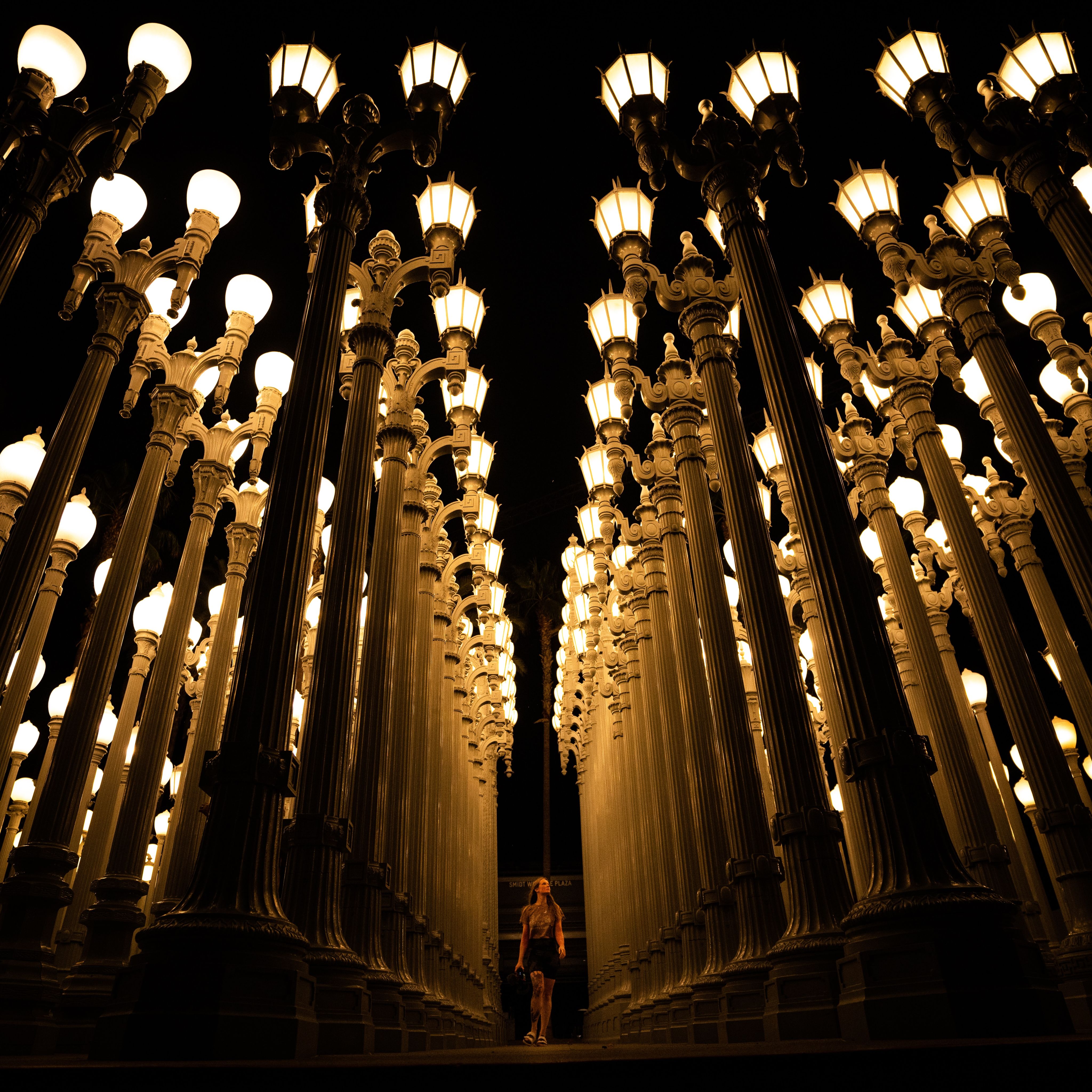
Photo by Intricate Explorer on Unsplash
Photo by Ruben Gutierrez on Unsplash
Photo by Ruben Gutierrez on Unsplash

Photo by Venti Views on Unsplash
Photo by Venti Views on Unsplash




